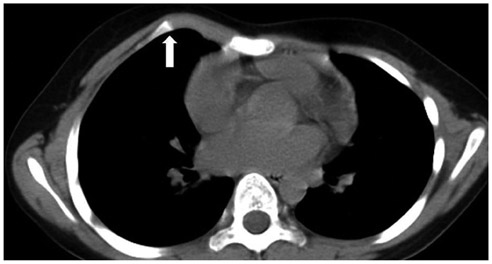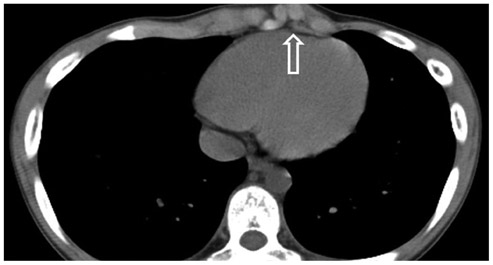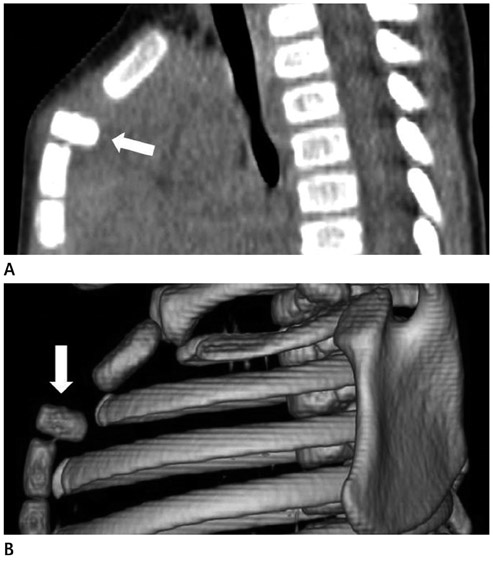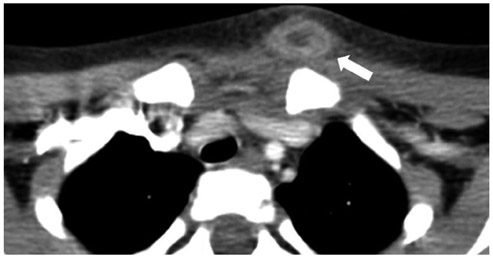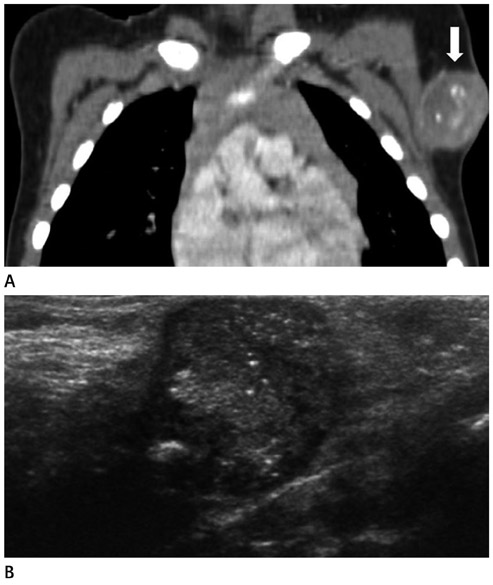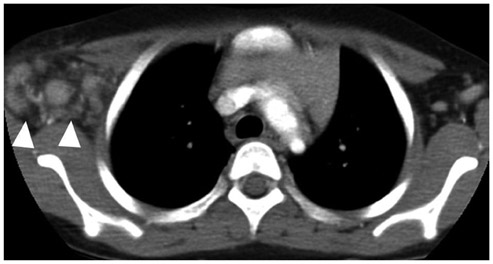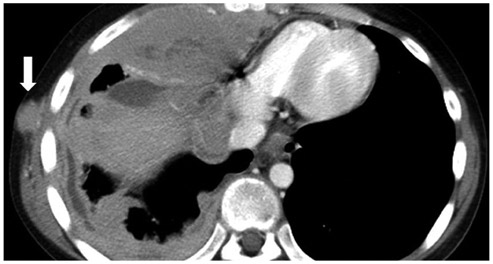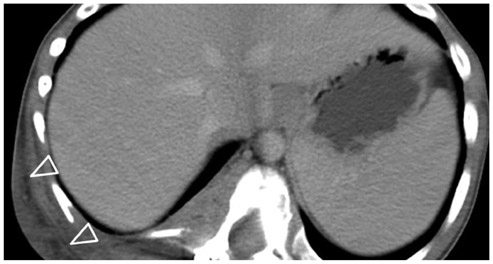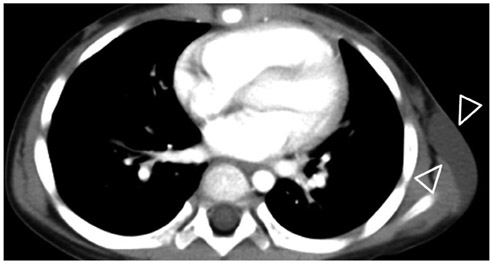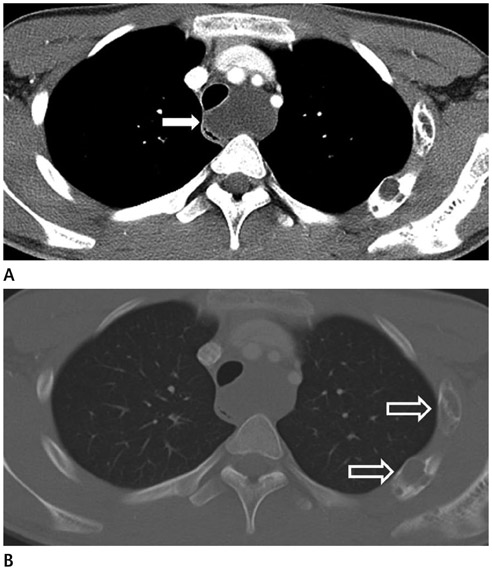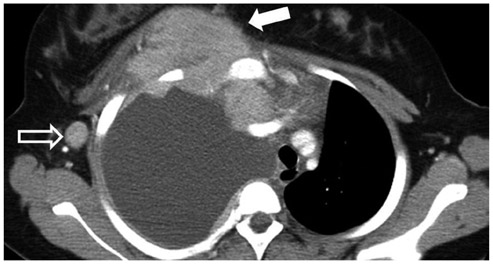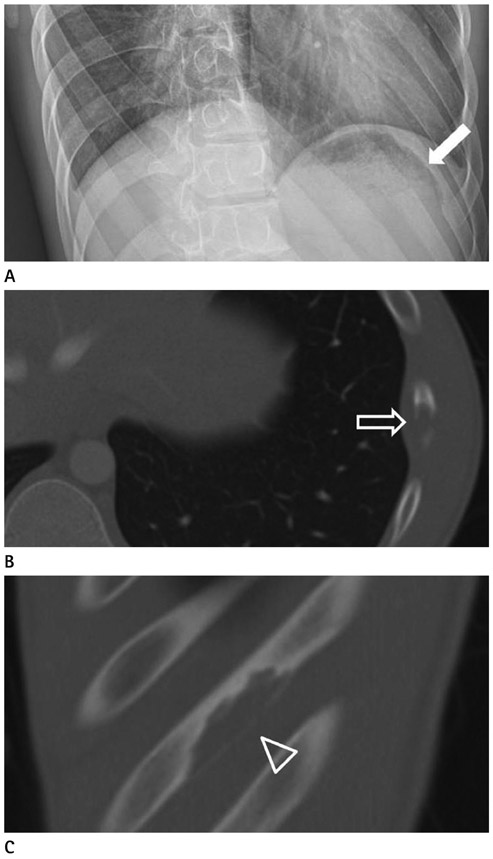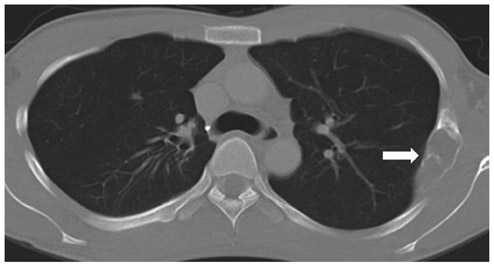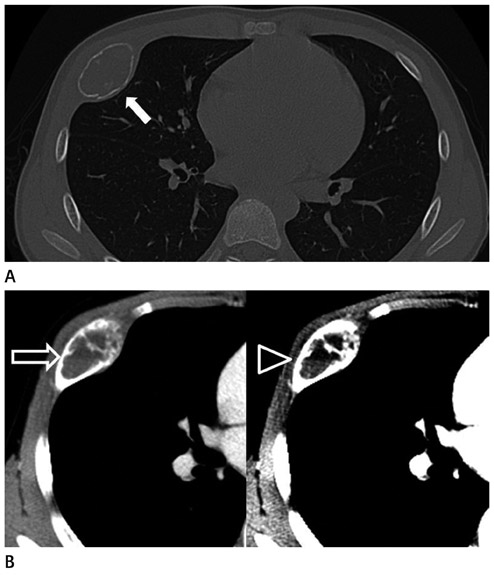J Korean Soc Radiol.
2013 Mar;68(3):261-269. 10.3348/jksr.2013.68.3.261.
Multi-Detector CT Findings of Palpable Chest Wall Masses in Children: A Pictorial Essay
- Affiliations
-
- 1Department of Radiology, Soonchunhyang University College of Medicine, Cheonan Hospital, Cheonan, Korea. ytokim@schmc.ac.kr
- 2Department of Radiology, Soonchunhyang University College of Medicine, Bucheon Hospital, Bucheon, Korea.
- KMID: 1748462
- DOI: http://doi.org/10.3348/jksr.2013.68.3.261
Abstract
- A wide variety of diseases manifest as palpable chest wall masses in children. These include normal variation, congenital anomalies, trauma, infection, axillary lymphadenopathies, soft tissue tumors and bone tumors. Given that most of these diseases are associated with chest wall deformity, diagnosis is difficult by physical examination or ultrasonography alone. However, multi-detector CT with three dimensional reconstruction is useful in the characterization and differential diagnosis of palpable chest wall lesions. In this article, we review the spectrum of palpable chest wall diseases and illustrate their multi-detector CT presentation.
MeSH Terms
Figure
Reference
-
1. Donnelly LF, Frush DP. Abnormalities of the chest wall in pediatric patients. AJR Am J Roentgenol. 1999. 173:1595–1601.2. Jeung MY, Gangi A, Gasser B, Vasilescu C, Massard G, Wihlm JM, et al. Imaging of chest wall disorders. Radiographics. 1999. 19:617–637.3. Donnelly LF. Use of three-dimensional reconstructed helical CT images in recognition and communication of chest wall anomalies in children. AJR Am J Roentgenol. 2001. 177:441–445.4. Wong KS, Hung IJ, Wang CR, Lien R. Thoracic wall lesions in children. Pediatr Pulmonol. 2004. 37:257–263.5. Pawar RV, Blacksin MF. Traumatic sternal segment dislocation in a 19-month-old. Emerg Radiol. 2007. 14:435–437.6. Kim DY, Lee SW, Hwang JY. Ultrasonographic features of BCG lymphadenitis. J Korean Radiol Soc. 2005. 52:31–36.7. Subhawong TK, Fishman EK, Swart JE, Carrino JA, Attar S, Fayad LM. Soft-tissue masses and masslike conditions: what does CT add to diagnosis and management? AJR Am J Roentgenol. 2010. 194:1559–1567.8. Inampudi P, Jacobson JA, Fessell DP, Carlos RC, Patel SV, Delaney-Sathy LO, et al. Soft-tissue lipomas: accuracy of sonography in diagnosis with pathologic correlation. Radiology. 2004. 233:763–767.9. Nield LS, Kamat D. Lymphadenopathy in children: when and how to evaluate. Clin Pediatr (Phila). 2004. 43:25–33.
- Full Text Links
- Actions
-
Cited
- CITED
-
- Close
- Share
- Similar articles
-
- Multi-Detector CT Findings of Typical and Atypical Appendicitis: A Pictorial Essay
- Multi-Slice Spiral CT of Living-Related Liver Transplantation in Children: Pictorial Essay
- Congenital Anomalies of the Coronary Sinus: A Pictorial Essay
- CT Findings of Foreign Bodies in the Chest: A Pictorial Essay
- Azygos System on Multi-Detector Computed Tomography: Pictorial Essay

